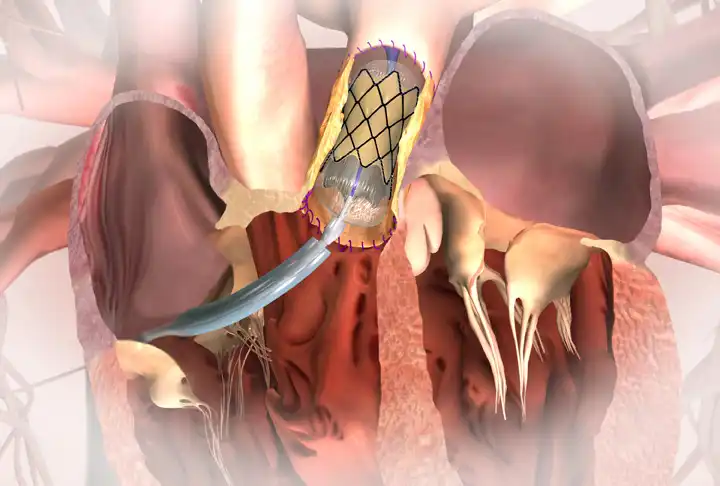TAVI (Transcatheter Aortic Valve Implantation)
A Minimally Invasive Solution for Aortic Valve Disease

What is TAVI?
Transcatheter Aortic Valve Implantation (TAVI), also known as Transcatheter Aortic Valve Replacement (TAVR), is a minimally invasive procedure designed to treat aortic valve stenosis. This condition occurs when the aortic valve becomes narrowed, restricting blood flow from the heart to the rest of the body. TAVI replaces the damaged valve without the need for open-heart surgery, offering a safer alternative for high-risk or inoperable patients.
Key Features of TAVI
- Minimally invasive, performed through small incisions
- Suitable for patients with severe aortic stenosis
- Shorter recovery time compared to open-heart surgery
- Effective in improving heart function and quality of life
When is TAVI Needed?
TAVI is recommended for patients with:
- Severe Aortic Stenosis: Causing significant symptoms and affecting daily life
- High Surgical Risk: Patients who are not candidates for traditional valve replacement surgery
- Elderly Patients: Offering a safer alternative with less physical strain
- Symptomatic Disease: Including chest pain, shortness of breath, and fainting
How is TAVI Performed?
The TAVI procedure is performed by a specialized team of cardiologists and cardiac surgeons:
- Access Point: A catheter is inserted through a small incision in the groin or chest.
- Valve Placement: Using imaging guidance, the new valve is positioned within the damaged aortic valve.
- Deployment: The new valve is expanded and begins functioning immediately, taking over the job of the diseased valve.
- Closure: The catheter is removed, and the incision is closed.
Benefits of TAVI
TAVI offers several advantages over traditional open-heart surgery:
- Less invasive, with reduced recovery times
- Improves symptoms like chest pain, shortness of breath, and fatigue
- Reduces risk for patients who are not surgical candidates
- Enhances overall heart function and life expectancy
Risks and Potential Complications
While TAVI is generally safe, potential risks include:
- Bleeding or infection at the catheter insertion site
- Valve leakage or malfunction
- Heart rhythm disturbances or the need for a pacemaker
- Rare cases of stroke or vascular complications
Recovery and Long-Term Management
Recovery after TAVI involves:
- Monitoring in the hospital for 1-2 days
- Resuming light activities within a few days and normal routines within weeks
- Regular follow-ups to ensure the valve is functioning properly
- Medications to prevent clotting and manage heart health
- Adopting a heart-healthy lifestyle, including diet and exercise
Most patients experience significant symptom relief and improved quality of life after TAVI.